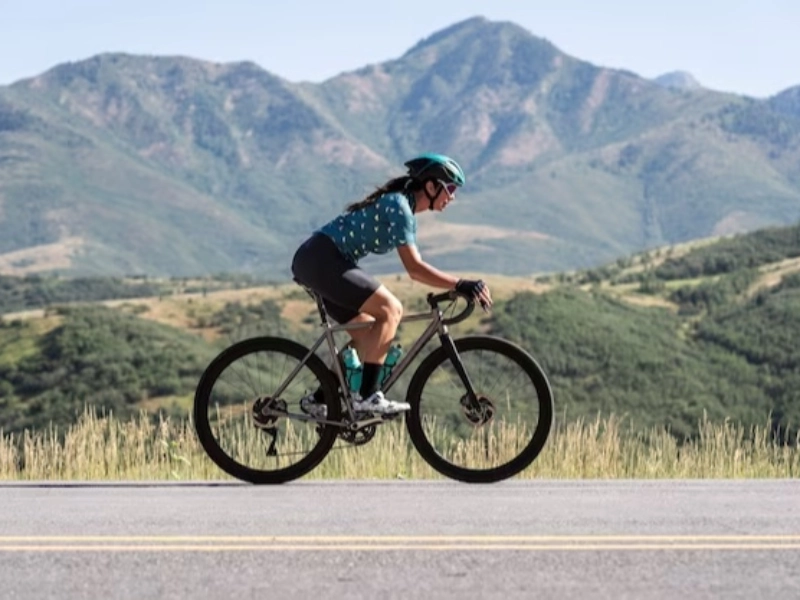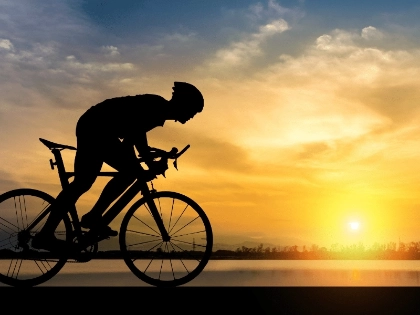Five Uses for a Cycling
A bicycle is a two-wheeled, steerable device that runs on human power and moves ahead by using leg strength. Cycling is a great way to get exercise, have fun, and compete in sports. For short tasks, riding a bike is a time-efficient option that is frequently quicker than driving a car in towns with well-designed bike lanes. Most bikes have multiple gears to give the best pedaling cadence for different types of terrain.
1. Conveyance
 Riding a bicycle is a cheap form of transportation. They demand a great deal less upkeep and repair money than cars. Furthermore, bikes don't produce any damaging greenhouse gases that exacerbate climate change.
Compared to driving or walking, cycling is a more time-efficient way to get around. It helps you avoid traffic congestion and get to your destination faster. Additionally, it is an excellent kind of exercise that tones your lungs, stimulates your bowels, and strengthens your heart and blood vessels.
For added convenience, bicycles can be equipped with a variety of attachments, such as panniers, racks, and baskets for carrying groceries, tools, or bags. Certain bikers opt to ride cargo bicycles, such long-wheelbase tandems and bakfiets, which are capable of towing heavy loads or kids. Bicycles come in a range of handlebar, stem, and frame designs, making customization simple.
Riding a bicycle is a cheap form of transportation. They demand a great deal less upkeep and repair money than cars. Furthermore, bikes don't produce any damaging greenhouse gases that exacerbate climate change.
Compared to driving or walking, cycling is a more time-efficient way to get around. It helps you avoid traffic congestion and get to your destination faster. Additionally, it is an excellent kind of exercise that tones your lungs, stimulates your bowels, and strengthens your heart and blood vessels.
For added convenience, bicycles can be equipped with a variety of attachments, such as panniers, racks, and baskets for carrying groceries, tools, or bags. Certain bikers opt to ride cargo bicycles, such long-wheelbase tandems and bakfiets, which are capable of towing heavy loads or kids. Bicycles come in a range of handlebar, stem, and frame designs, making customization simple.
2. Workout
 Cycling is a fantastic type of exercise that can help lower body fat and increase cardiovascular fitness, coordination, and strength in the muscles. People of all ages and abilities, from young children to those recuperating from spinal injuries, can enjoy this enjoyable, low-impact activity.
With the rise of inclusive bike groups, it can even be a social sport. A quick bike ride also benefits the environment because it produces fewer harmful pollutants than a brief drive in a car.
Regular cyclists may have a decreased risk of diabetes, high blood pressure, heart disease, stroke, and certain malignancies. Because happy hormones called endorphins are released, it can also enhance mental wellness. Regularly riding a bike for thirty minutes can also improve your quality of sleep.
Cycling is a fantastic type of exercise that can help lower body fat and increase cardiovascular fitness, coordination, and strength in the muscles. People of all ages and abilities, from young children to those recuperating from spinal injuries, can enjoy this enjoyable, low-impact activity.
With the rise of inclusive bike groups, it can even be a social sport. A quick bike ride also benefits the environment because it produces fewer harmful pollutants than a brief drive in a car.
Regular cyclists may have a decreased risk of diabetes, high blood pressure, heart disease, stroke, and certain malignancies. Because happy hormones called endorphins are released, it can also enhance mental wellness. Regularly riding a bike for thirty minutes can also improve your quality of sleep.
3. Leisure Time
 People of various ages can enjoy bicycle sports, including bike racing. They can involve everything from coasting down smooth highways to ascending a mountain pass or pulling off daring maneuvers.
Cycling is a low-impact workout suitable for all fitness levels and age groups. Strength, endurance, and cardiovascular health all grow with it. In addition, it is affordable, enjoyable, and eco-friendly.
An increase in bicycles in a community can lessen traffic and pedestrian and kid safety issues. It can also promote a sense of community by encouraging individuals to use neighborhood businesses and services. Riding a bike can help you consume less fossil fuel and produce less pollution. In fact, some hand cycles can even help those with restricted mobility move around, such amputees or those healing from spinal injuries.
People of various ages can enjoy bicycle sports, including bike racing. They can involve everything from coasting down smooth highways to ascending a mountain pass or pulling off daring maneuvers.
Cycling is a low-impact workout suitable for all fitness levels and age groups. Strength, endurance, and cardiovascular health all grow with it. In addition, it is affordable, enjoyable, and eco-friendly.
An increase in bicycles in a community can lessen traffic and pedestrian and kid safety issues. It can also promote a sense of community by encouraging individuals to use neighborhood businesses and services. Riding a bike can help you consume less fossil fuel and produce less pollution. In fact, some hand cycles can even help those with restricted mobility move around, such amputees or those healing from spinal injuries.
4. Child Transportation
 Bike riding is a terrific alternative for parents who want to get their kids outside and provide them a healthy type of exercise. On the other hand, riding a bicycle with kids should only occur on roads where traffic regulations are observed. When riding on the streets, kids should be 10 years old or older and wear helmets at all times.
Numerous health benefits of cycling have been demonstrated by studies, including improvements in weight management, muscular endurance, and cardiovascular fitness. Moreover, it lowers the risk of diabetes, heart disease, and high blood pressure. It is recommended that bike commuters wear bright colors and utilize reflectors when riding at night to increase their visibility to vehicles. They should also ride far enough away from stationary vehicles to prevent crashes or door dings.
Bike riding is a terrific alternative for parents who want to get their kids outside and provide them a healthy type of exercise. On the other hand, riding a bicycle with kids should only occur on roads where traffic regulations are observed. When riding on the streets, kids should be 10 years old or older and wear helmets at all times.
Numerous health benefits of cycling have been demonstrated by studies, including improvements in weight management, muscular endurance, and cardiovascular fitness. Moreover, it lowers the risk of diabetes, heart disease, and high blood pressure. It is recommended that bike commuters wear bright colors and utilize reflectors when riding at night to increase their visibility to vehicles. They should also ride far enough away from stationary vehicles to prevent crashes or door dings.
5. Cargo Transportation
 In terms of biology and mechanics, the bicycle is the most effective form of human-powered transportation. With 99% of the energy from the pedals being converted into forward motion, it enables the rider to cover large distances with little effort.
There are several advantages for bike riders, including as better physical health, less stress, and less of an influence on the environment. In addition, they discover parking spaces and may avoid traffic jams more readily than a car.
In addition to being utilized for leisurely rides, bikes can be employed for delivery and load carrying. In actuality, cargo bikes are becoming more and more commonplace worldwide. In order to overcome weaknesses like fuel shortages and destroyed transportation infrastructure, they are often used in disaster relief efforts. For instance, the Pedaling Relief Project uses e-cargo bikes to deliver supplies and life-saving meals to remote locations.
In terms of biology and mechanics, the bicycle is the most effective form of human-powered transportation. With 99% of the energy from the pedals being converted into forward motion, it enables the rider to cover large distances with little effort.
There are several advantages for bike riders, including as better physical health, less stress, and less of an influence on the environment. In addition, they discover parking spaces and may avoid traffic jams more readily than a car.
In addition to being utilized for leisurely rides, bikes can be employed for delivery and load carrying. In actuality, cargo bikes are becoming more and more commonplace worldwide. In order to overcome weaknesses like fuel shortages and destroyed transportation infrastructure, they are often used in disaster relief efforts. For instance, the Pedaling Relief Project uses e-cargo bikes to deliver supplies and life-saving meals to remote locations.










